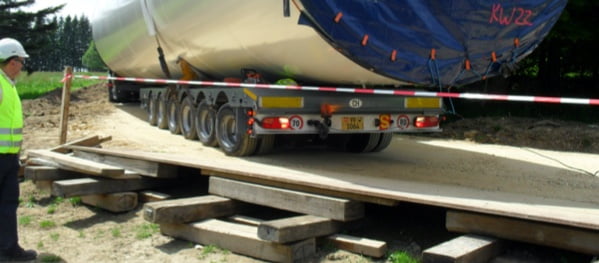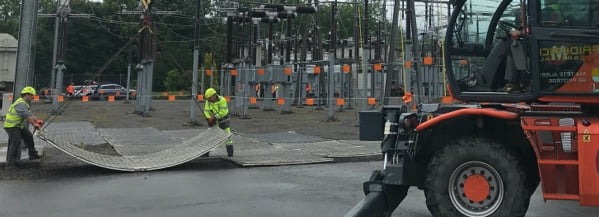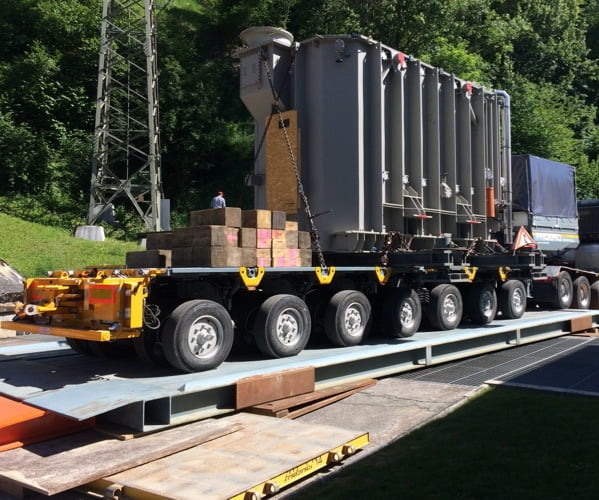Temporary roads and bridges
The access road no longer exists, but your project requires road transport?
Or perhaps your plant’s floor slab cannot accommodate the load of a machine you need to install?
We can provide you with a number of temporary road and slab reinforcement systems. The advantages:
- No earthmoving or civil engineering work required
- Respect for the site and the environment
- Rapid installation
- Capacity geared to each situation
Temporary bridges and flyovers allow our customers to overcome obstacles or consolidate works planned for load-bearing capacities that are inferior to the weight of our convoys.
We also offer a wide range of solutions to protect plant floors and outdoor surfaces when your projects may cause damage to existing areas.



Answers to your questions
How does an overhead crane work?
An overhead travelling crane lifts and moves heavy loads using a motorized hoist attached to a cart. The trolley moves along the crane girder, enabling the crane to carry heavy loads over its entire span.
Who can use an overhead crane?
Operating an overhead crane can be extremely dangerous for the user. They can only be operated by people authorized by their employers. Drivers are required to undergo the necessary training to obtain their authorization, and must renew it every 5 years.
What is the typical load capacity of an overhead crane?
Load capacities vary from one overhead crane to another:
Overhead travelling crane: from 250Kg to 10 tons
Single-girder overhead travelling crane: from 1 to 20 tons
Jib crane: 125 kg to 20 tons
Console crane: 1 to 150 tons
Double-girder overhead travelling crane: 20 to 600 tons
How to choose the right overhead crane?
To select the most appropriate crane for your application, it’s important to know the maximum load the crane will have to lift, as well as the size of the work area. Special features such as resistance to heat and corrosion, or the ability to operate in damp environments, must also be taken into account.
How do I maintain a temporary bridge?
To keep a temporary bridge in top condition, a number of steps need to be taken. Remember to inspect and clean it daily, and lubricate it occasionally to prevent premature wear. As for overhead cranes, it’s important to check brakes and cables, update software and carry out structural checks. For any inspection, you can call on our team of professionals to ensure its smooth and safe operation.
How are temporary bridges built?
Temporary bridges are built using lightweight materials such as steel, wood or aluminum, suitable for temporary use. Development involves site analysis, choice of materials, creation of temporary foundations, modular assembly for rapid construction, use of temporary support elements, and particular attention to signage and safety.
What safety standards apply to the construction and use of temporary bridges?
Safety standards for temporary bridges include strict guidelines for construction and use. These include measures such as load capacity estimates, structural stability, weather resistance, and protocols to ensure the safety of workers and the public.
Would you like to receive an offer for your temporary road and bridge project?
Contact us and we will send you a non-binding offer as soon as possible.

